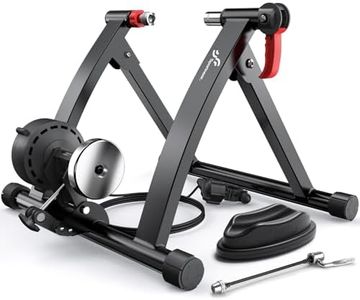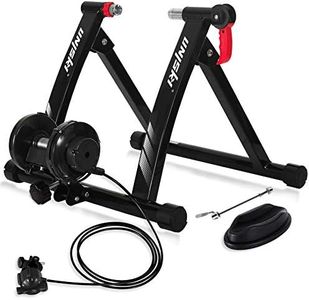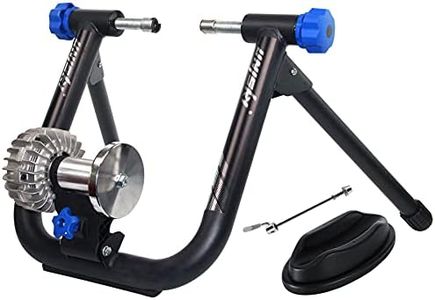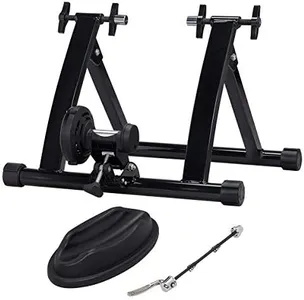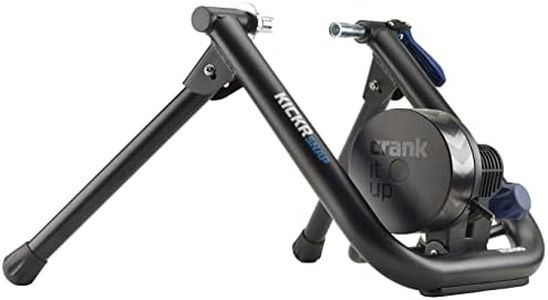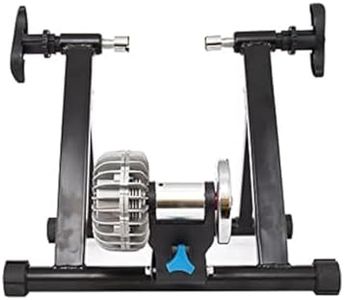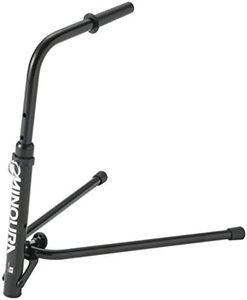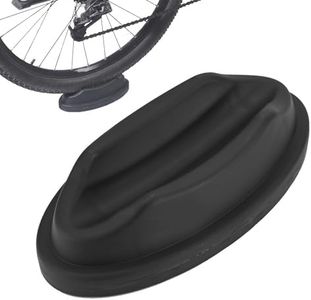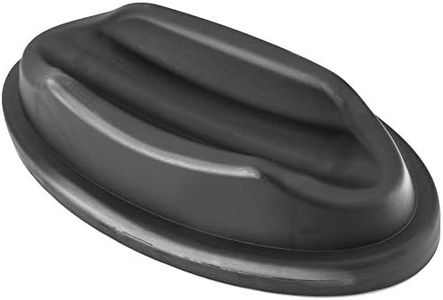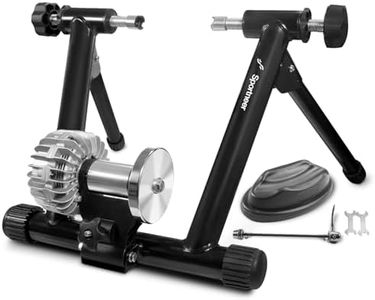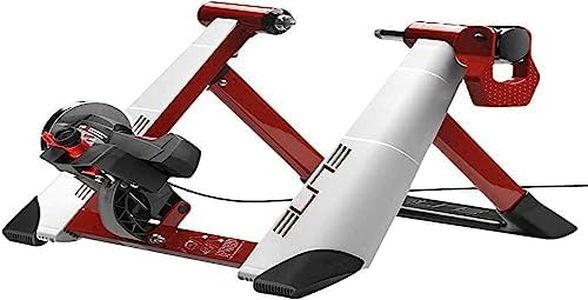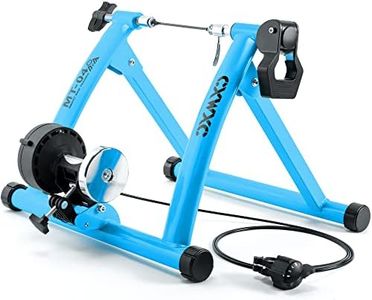We Use CookiesWe use cookies to enhance the security, performance,
functionality and for analytical and promotional activities. By continuing to browse this site you
are agreeing to our privacy policy
10 Best Bike Trainer Stands
From leading brands and best sellers available on the web.Recommended lists
Buying Guide for the Best Bike Trainer Stands
Choosing the right bike trainer stand can significantly enhance your indoor cycling experience. A bike trainer stand allows you to convert your regular bike into a stationary one, making it possible to train indoors regardless of the weather. When selecting a bike trainer stand, it's important to consider several key specifications to ensure you get the best fit for your needs. Understanding these specs will help you make an informed decision and get the most out of your indoor training sessions.Type of TrainerThere are three main types of bike trainer stands: wheel-on, direct-drive, and rollers. Wheel-on trainers are the most common and affordable, where the bike's rear wheel stays on and contacts a resistance unit. Direct-drive trainers require you to remove the rear wheel and attach the bike directly to the trainer, offering a more realistic ride feel and quieter operation. Rollers consist of a frame with three cylinders that the bike rests on, providing a more challenging and natural riding experience. Choose a wheel-on trainer if you're looking for simplicity and affordability, a direct-drive trainer for a quieter and more realistic ride, or rollers if you want to improve your balance and bike handling skills.
Resistance TypeBike trainers use different methods to create resistance, including wind, magnetic, fluid, and electromagnetic. Wind trainers use a fan to create resistance, which increases with speed but can be noisy. Magnetic trainers use a magnetic flywheel to provide resistance, offering adjustable levels but with a less realistic road feel. Fluid trainers use a combination of a magnetic flywheel and fluid to create progressive resistance, providing a smoother and quieter ride. Electromagnetic trainers offer the most advanced resistance control, often with smart features for interactive training. If you prefer a simple and affordable option, go for wind or magnetic trainers. For a quieter and more realistic experience, choose fluid or electromagnetic trainers.
CompatibilityNot all bike trainer stands are compatible with every bike. It's important to check if the trainer is compatible with your bike's wheel size, axle type, and frame. Most trainers are designed to fit standard road and mountain bikes, but some may require adapters for specific axle types or wheel sizes. Ensure that the trainer you choose can accommodate your bike to avoid any compatibility issues. If you have a unique bike setup, look for trainers that offer a wide range of compatibility options or come with necessary adapters.
Noise LevelThe noise level of a bike trainer stand can be an important factor, especially if you live in an apartment or have housemates. Wind trainers tend to be the loudest, while magnetic trainers are quieter. Fluid trainers offer a quieter ride, and direct-drive trainers are generally the quietest. If noise is a concern, consider opting for a fluid or direct-drive trainer to minimize disruption. Keep in mind that the type of tire you use can also affect noise levels, with smoother tires typically producing less noise.
Smart FeaturesSmart trainers come with built-in sensors and connectivity options that allow you to connect to training apps and devices. These features can provide a more interactive and engaging training experience, with options for virtual rides, structured workouts, and performance tracking. If you enjoy using technology to enhance your workouts, look for trainers with smart features. However, if you prefer a more straightforward approach, a basic trainer without smart features may be sufficient.
Portability and StorageConsider how easy it is to set up, move, and store the bike trainer stand. Some trainers are more portable and can be folded for easy storage, making them ideal for those with limited space. Others may be bulkier and more challenging to move. If you need to frequently set up and take down your trainer, look for a model that is lightweight and easy to fold. For a more permanent setup, portability may be less of a concern.
